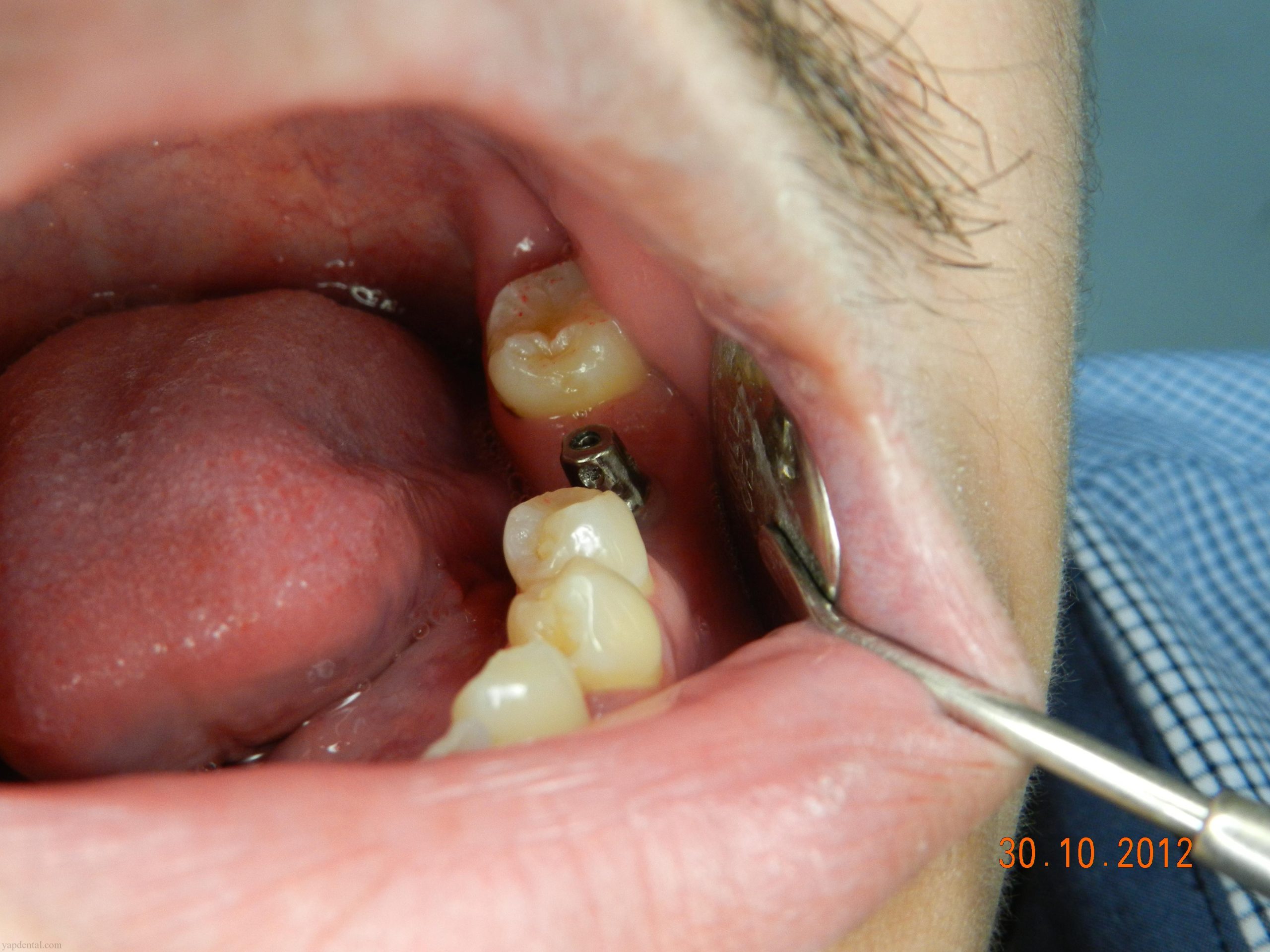Missing molars can significantly impact your ability to chew comfortably and may affect your smile. Molar implants offer a permanent solution to restore both function and aesthetics. This comprehensive guide will cover everything you need to know about molar implants, from the procedure and benefits to costs and potential risks. Wondering how to restore your oral health after losing other teeth as well? [Pontic tooth](https://chaztin.com/pontic-tooth) implants can also help regain your smile.
What Are Molar Implants?
Molar implants are artificial tooth roots, typically made of biocompatible titanium, surgically placed into the jawbone to replace missing molars. They serve as a stable foundation for prosthetic crowns, which are custom-made to resemble natural teeth. Unlike dentures or bridges, molar implants are integrated directly into the jawbone, providing exceptional stability and function. They’re like giving your back teeth a second chance!
Components of a Molar Implant
- Implant Post: The titanium screw that’s surgically placed into the jawbone.
- Abutment: A connector piece that attaches to the implant post and protrudes through the gums.
- Crown: The prosthetic tooth that’s attached to the abutment, restoring the visible portion of the missing molar.
The Molar Implant Procedure: A Step-by-Step Guide
The molar implant process typically involves several stages:
1. Consultation and Evaluation
Your journey begins with a thorough consultation with a dental professional. They will evaluate your oral health, take X-rays and 3D images to assess your jawbone density, and discuss your overall health and expectations. This helps determine if you’re a suitable candidate for molar implants.
2. Implant Placement
If you’re a good candidate, the implant surgery is scheduled. During the procedure, the titanium implant post is surgically embedded into your jawbone. Local anesthesia is used to ensure your comfort.
3. Osseointegration: The Fusion Process
Following implant placement, a crucial period called osseointegration begins. This natural process allows the implant to fuse with your jawbone over several months, creating a strong and stable bond. This integration is essential for the long-term success of the implant.
4. Abutment Placement
Once osseointegration is complete, a small connector called an abutment is attached to the implant. This abutment acts as an intermediary between the implant and the prosthetic crown.
5. Crown Placement: Restoring Your Smile
Finally, a custom-made crown is fabricated to match the color, shape, and size of your natural teeth. The crown is securely attached to the abutment, completing the restoration process and giving you back your chewing power.
Why Choose Molar Implants? Benefits and Advantages
Molar implants offer several compelling advantages over other tooth replacement options:
- Restored Chewing Function: Molar implants allow you to eat a wide variety of foods with confidence, improving your overall diet and nutrition.
- Enhanced Aesthetics: Implants fill the gaps left by missing molars, creating a natural-looking and complete smile. Sagging breasts are also a common problem impacting confidence, but effective treatments like those for pendulous breasts can restore a youthful appearance.
- Jawbone Preservation: Implants stimulate the jawbone, preventing bone loss that can occur when teeth are missing.
- Long-Term Durability: With proper care, molar implants can last a lifetime, offering a permanent solution to tooth loss.
- Improved Oral Health: Implants don’t require altering adjacent teeth, preserving their health and integrity.
- Enhanced Confidence: A complete and functional smile can boost self-esteem and improve your overall quality of life.
Types of Molar Implants
While the term “molar implant” refers to the location of the implant (in the back of the jaw), there are different types of dental implants that can be used in the molar region:
- Endosteal Implants: The most common type, placed directly into the jawbone. These are typically the preferred choice for most patients.
- Subperiosteal Implants: Placed on or above the jawbone, beneath the gum tissue. These may be an option for patients with insufficient jawbone density for endosteal implants.
Costs of Molar Implants: Understanding the Investment
The cost of molar implants can vary based on several factors, including:
- Number of Implants Needed
- Materials Used
- Geographic Location
- Dentist’s Fees
It’s crucial to discuss costs and financing options with your dentist during the initial consultation. Many dental offices offer payment plans and financing options to make treatment more accessible.
Potential Risks and Complications
While generally safe, molar implant surgery carries some potential risks, including:
- Infection: Rare, but possible, especially if proper oral hygiene isn’t maintained.
- Nerve Damage: There’s a slight risk of temporary or, rarely, permanent nerve damage, which can cause numbness or tingling in the lip, chin, or gums.
- Sinus Problems: Implants in the upper jaw may sometimes affect the sinuses.
- Implant Failure: In some cases, the implant may not fully integrate with the jawbone.
Recovery and Aftercare: Ensuring Long-Term Success
Proper aftercare is essential for the long-term success of your molar implants. Your dentist will provide detailed post-operative instructions, which typically include:
- Maintaining Excellent Oral Hygiene: Brushing and flossing regularly are crucial to prevent infection and maintain the health of your implants and surrounding gums.
- Following a Soft Food Diet: Initially, you may need to stick to soft foods to avoid putting excessive pressure on the healing implant site.
- Regular Dental Checkups: Routine dental checkups and professional cleanings are essential to monitor the health of your implants and address any potential issues early on.
How Long Do Molar Implants Last? Factors Influencing Longevity
With proper care, molar implants can potentially last a lifetime. Several factors can influence their longevity, including:
- Oral Hygiene: Maintaining meticulous oral hygiene is paramount. Plaque buildup can lead to peri-implantitis, an infection that can compromise the implant.
- Overall Health: Certain medical conditions, such as uncontrolled diabetes or osteoporosis, can affect healing and impact the long-term success of the implant.
- Implant Placement: Accurate and precise implant placement by a skilled surgeon is essential for successful osseointegration.
- Habits: Habits like teeth grinding (bruxism) can put excessive stress on implants and increase the risk of damage.
Ongoing Research and Advancements in Molar Implants
The field of dental implantology is constantly evolving. Researchers are continually exploring new materials, techniques, and technologies to improve osseointegration, reduce healing time, and enhance the long-term success of dental implants.
Can You Get Implants on Molars? Yes!
Dental implants are a viable option for replacing missing molars. They offer significant advantages compared to traditional alternatives like bridges and dentures, particularly in terms of stability, function, and longevity. However, it’s crucial to consult with a qualified dental professional to determine if molar implants are the right solution for you based on your individual circumstances and oral health.
- Bento Box Shopping Tips for Smart and Stylish Lunch Prep - December 14, 2025
- Bento Box Trays Streamline Restaurant Meal Presentation and Transport - December 13, 2025
- Plastic Bento Boxes Face Scrutiny Over Sustainability Impacts - December 11, 2025










